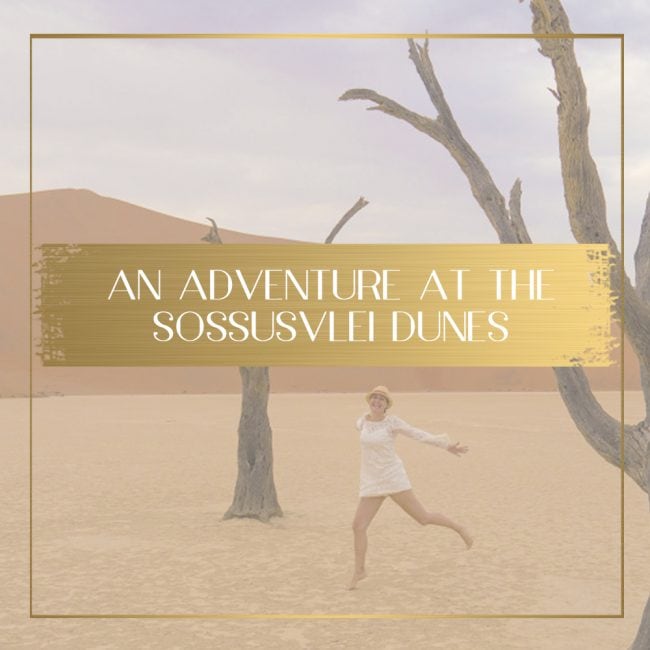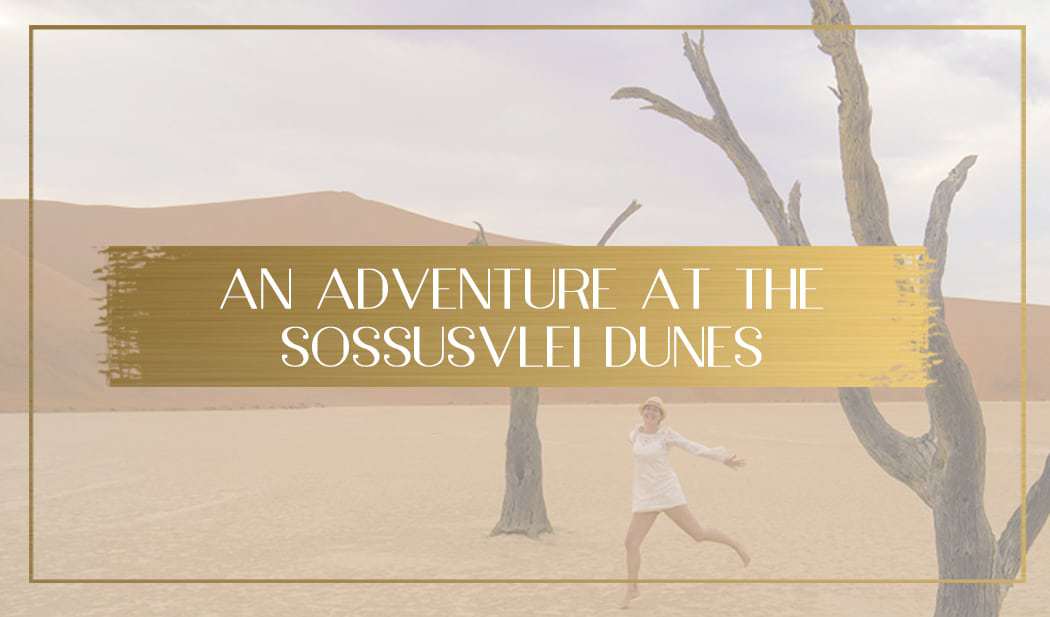I had not been able to sleep all night. Ever since we moved from the &Beyond property, Sossusvlei Desert Lodge, to Sossus Dune Lodge to be closer to Sossusvlei, I had been cursing that decision.
Sossusvlei Desert Lodge vs Sossus Dune Lodge
Sossusvlei Desert Lodge is a stunning property of high levels of luxury. The guides are great, Paolo, the Manager, comes across as a friend showing you his backyard. His attitude is that of someone who is overwhelmed by his luck and the opportunity to live in such an incredible part of the world. And with reason.
On the other side, Sossus Dune Lodge is a government managed property of much lower standards but, most importantly, the one missing item in the heat of the desert, was AC. With temperatures during the day hitting well above 35 Celsius and huts made of materials that kept the warmth, I could not fall asleep, despite having a fan blowing on my face. Why did we move?
History of Sossusvlei
Sossusvlei is one of the most famous and stunning parts of Namibia and seeing it at sunrise can only be done if staying within the park. The drive from the entrance to the dunes is 65km, which can take over an hour, so by the time you arrive, the sun is up. But oh the lack of sleep was worth it! Even without the rays of sun being able to penetrate the thick cloud cover, Sossusvlei’s landscapes were even more grand in real life than in the photos.
Sossusvlei is a clay pan surrounded by dunes that is part of Africa’s largest conservations area, the Namib-Naukluft National Park and it includes the Namib Desert and the Naukluft Mountain range. At almost 50,000 km2 the park is larger than Switzerland and mostly inaccessible to visitors. At one point the dunes occupied an area 2,000 km long and 100km wide. Diamonds were discovered here in the 1900s. This is the desert that gave the country its name, meaning “the land of open spaces”, for the word “namib”, that is very clear every time we explore the landscapes or fly over the country. The Namib dunes were listed as a UNESCO heritage Site in 2013.
The dunes of Sossusvlei
Flying over the park, on a hot air balloon, is an impressive experience. The Naukluft section of the park is made up of high, isolated rocky red granite outcrops that sprout suddenly from the otherwise flat surroundings. The outcrops are rich in feldspars, crystallized from magma, and sandstone, sand-sized minerals and rocks. The lava explosions of millions of years ago deposited a layer of magma that is today’s park. This is a fascinating area for geologists, archeologists and adventurers, as if a dinosaur was going to wake up and appear from behind one of these oddly shaped mountains.
The Namib desert is arguably the oldest in the world and, although hard to prove, it is said to contain the tallest sand dunes, some towering above 300m. The dunes extend like a sea of sand for over 50km into the Atlantic Ocean and are easily recognizable by their orange, red and pink hues coming from the red oxidized iron in the sand. The brighter the color the older the dune.
The dunes were created when the Orange River, on the border with South Africa, carried sand from the Kalahari into the ocean and the Benguela current brought it up North into land again. The surf deposited the sand back on the shore and the wind blew it up into the sand dunes that we see today. This is a process that started 3 to 5 millions of years ago and continuous until today.
Contrary to the dunes in other deserts like the Sahara, the Namib desert and Sossusvlei dunes are star-shaped. From the top, the sand flows in all directions creating a starfish shape. And every day, the wind blows the sand back up, clearing the footprints of all the visitors from the previous day and showing a sharp and rounded shape for the next sunrise.
Water here is scarce, although we were lucky enough to see it in our visit, and the area sees an average of 5cm of rainfall a year. When rain falls, the clay surface of Sossusvlei does not let any water penetrate further down and it can stay on the surface creating lakes that reflect the sun and the dunes around. This is a magical experience that has happened every ten years on average. A photographers paradise that would be.
The most famous dunes in Sossusvlei
The most famous parts of Sossusvlei are Deadvlei, Dune 45, Big Daddy and Big Mamma. These are the most photogenic, most symmetrically sculpted, highest and most easily accessible. The road from the park’s entrance leads to a parking area in front of Big Daddy and Deadvlei. After climbing Big Daddy for sunrise, Deadvlei was just on the other side, over the sand.
Deadlvei is a dead marsh, an area where age old dead trees are in the process of petrification. This is the most photographed of all of Sossusvlei. Wandering on the cracked Earth and dried out clay pan was a highlight of our visit. The area is almost entirely devoid of any life. The soil does not let any water in and plants are not strong enough to penetrate the surface. The result is beautiful in a desolate and theatrical way.
Climbing the dunes at Sossusvlei
We arrived at the parking lot first, before any other car made its way into the Sossusvlei area. We walked towards the massive dunes, I climbed the dune first, stepping my feet onto fresh sand, carefully reshaped overnight by the caressing wind. it roared, it sank, I had sand up to half my chin. I struggled to walk straight and fought not to roll down. “It is easiest if you walk on a line and step on each other’s footprints”, motioned our driver. “Just stop half way up and take a sit, I will be back shortly after setting up breakfast”. And so I walked, I climbed, I fought.
“Are we there yet?”, I asked my friend. Looking down, it felt as if we were indeed half way up, but looking up, the top of the dune looked farther than the flat ground. We sat down, half way up the dune, to wait for the sun rays to pierce through the thick clouds, a rarity in this part of the world. But they didn’t, and, faint instead, raindrops fell on my arms. This was surely a privilege, a unique and exclusive show just for us.
By the time we had arrived at our sitting spot, the parking lot was filling up quickly. More and more cars were arriving, some carrying a full family. they ddi not stop half way to the top, they carried on, until they could sit right on the edge, likely 300m high.
On one side of the Big Daddy dune there was the sunrise, slowly rising from behind the towering sand dunes. On the other, the famous Deadvlei was visible, though unrecognizable from above and with a 360 degree perspective. “Are you sure this is Deadvlei?”, asked another tourist. “I think my daughter has spotted the right tree that is on all the photos”.
I had erroneously assumed that Deadvlei only had one petrified camel thorn tree, but there were several, an entire forest on its way to full stone-look. Eventually, giving up on the sunrise that never way, we walked down and around the dune towards Deadvlei. “I should have just walked down the side of the dune”, I thought to myself as I trotted along the soft and deep sand, every time lifting my knee higher to unbury it from the sand.
And there it was, Deadvlei, a clay pan with hundreds of dead camel thorn trees on their way to petrified forest, standing still, against the backdrop of the sculpted pink sand dunes. Despite the large number of tourists and cars, Deadvlei appeared empty, only a few adventurous people walking their way through the desert. The sense of solitude and silence was maximum.
And so, sunrise on Sossusvlei remained a distant memory, a sight that could have been, a dream in my imagination.

